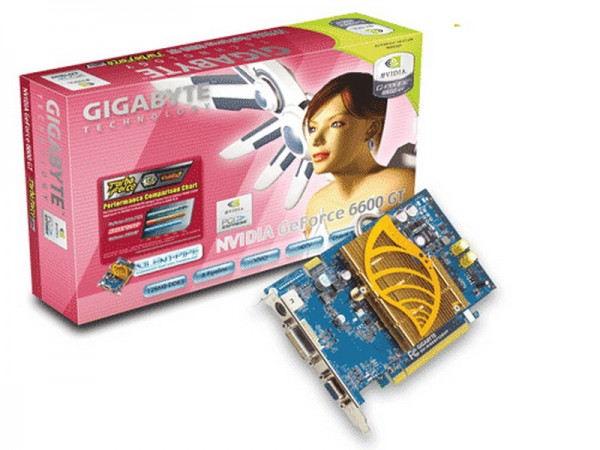GeForce 6600
Of the innovations, it should be noted the transition to a 0.11 - micron process technology (against 0.13 for the 6800 Series), a 128Bit memory bus, a reduced number of pixel and vertex pipelines - to 8 and 3, respectively, and a reduced number of transistors to 146 million , and a PCI-Express x16 interface. By the way, it's worth noting that these were the first NVIDIA cards with native PCI-Express support. As regards AGP 8X support, it required equipping boards with an HSI bridge, which, in fact, fully justified this development. As for technologies, it should be noted that the new line supports all the joys of the GeForce 6800 Series - Intellisample 3.0, UltraShadow II, and 3.0 pixel and vertex shaders.

Special architectural differences from NV40 were not noticeable, which, however, is not surprising - NV43 was a scaled (by reducing the number of vertex and pixel processors and memory controller channels) solution based on the NV40 architecture. The differences are quantitative (highlighted in bold on the diagram), not qualitative - from the point of view of architecture, the chip has not changed much.
So, there are 3 (there were 6) vertex processors, and two (there were four) independent pixel processors, each of which worked with one quad (2x2 pixel fragment). Interestingly, this time, PCI Express became a native (i.e. implemented on a chip) bus interface, and AGP 8x boards contained an additional PIC-E AGP bidirectional bridge.
In addition, we note a very important limiting point - a dual-channel controller and a 128-bit memory bus.
The architecture of vertex and pixel processors, the video processor remained the same.
The 6600 models primarily suffered from a lack of bandwidth. The peak fill rate of the 6600 GT was almost 2/3 that of the 6800 Ultra, while the memory bandwidth was more than half that, and that's not counting the potentially reduced caches and the dual-channel memory controller.
GeForce 6600 Specifications
| Name | GeForce 6600 |
| Core | NV43 |
| Process technology (µm) | 0.11 |
| Transistors (million) | 146 |
| Core frequency | 300 |
| Memory frequency (DDR) | 275 (550) |
| Bus and memory type | GDDR1 128 Bit |
| Bandwidth (Gb/s) | 8.8 |
| Pixel pipelines | 8 |
| TMU per conveyor | 1 |
| textures per clock | 8 |
| textures per pass | 8 |
| Vertex conveyors | 3 |
| Pixel Shaders | 3.0 |
| Vertex Shaders | 3.0 |
| Fill Rate (Mpix/s) | 1200 |
| Fill Rate (Mtex/s) | 2400 |
| DirectX | 9.0c |
| Anti-Aliasing (Max) | SS&MS - 8x |
| Anisotropic Filtering (Max) | 16x |
| Memory | 128/256/512 |
| Interface | PCI-E AGP |
| RAMDAC | 2x400 |

There were no architectural compromises in the 6600 - from the point of view of applications, everything that older cards can do, the 6600 could do. But unfortunately, the memory bandwidth limited this performance core in many ways. Modes with MSAA and high resolutions are noticeably less efficient than on older ones with a 256-bit memory bus. However, mainstream has traditionally been associated with playing at low and medium resolutions.



